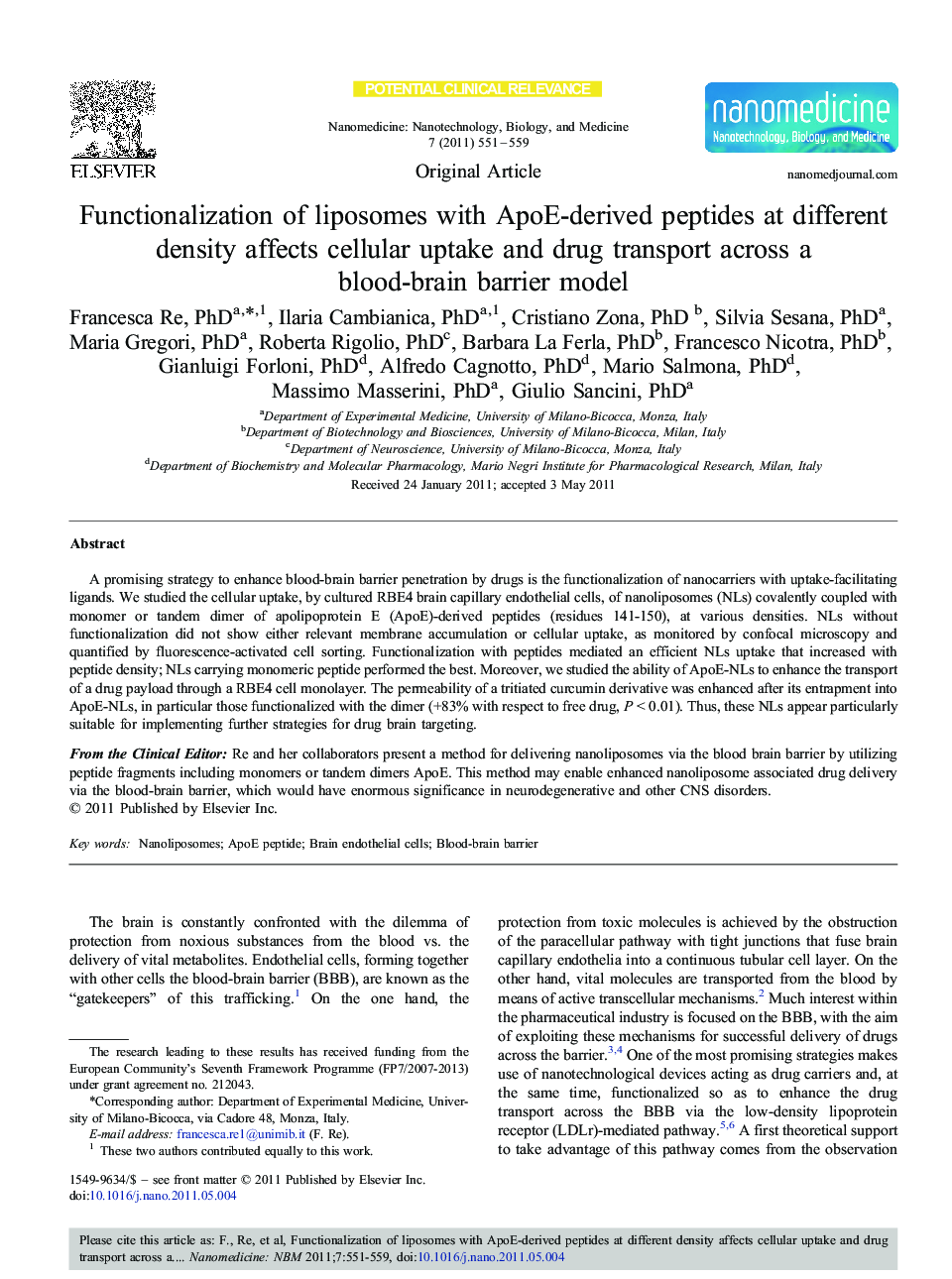| کد مقاله | کد نشریه | سال انتشار | مقاله انگلیسی | نسخه تمام متن |
|---|---|---|---|---|
| 878015 | 911057 | 2011 | 9 صفحه PDF | دانلود رایگان |

A promising strategy to enhance blood-brain barrier penetration by drugs is the functionalization of nanocarriers with uptake-facilitating ligands. We studied the cellular uptake, by cultured RBE4 brain capillary endothelial cells, of nanoliposomes (NLs) covalently coupled with monomer or tandem dimer of apolipoprotein E (ApoE)-derived peptides (residues 141-150), at various densities. NLs without functionalization did not show either relevant membrane accumulation or cellular uptake, as monitored by confocal microscopy and quantified by fluorescence-activated cell sorting. Functionalization with peptides mediated an efficient NLs uptake that increased with peptide density; NLs carrying monomeric peptide performed the best. Moreover, we studied the ability of ApoE-NLs to enhance the transport of a drug payload through a RBE4 cell monolayer. The permeability of a tritiated curcumin derivative was enhanced after its entrapment into ApoE-NLs, in particular those functionalized with the dimer (+83% with respect to free drug, P < 0.01). Thus, these NLs appear particularly suitable for implementing further strategies for drug brain targeting.From the Clinical EditorRe and her collaborators present a method for delivering nanoliposomes via the blood brain barrier by utilizing peptide fragments including monomers or tandem dimers ApoE. This method may enable enhanced nanoliposome associated drug delivery via the blood-brain barrier, which would have enormous significance in neurodegenerative and other CNS disorders.
Graphical AbstractNanoliposomes (NL) composed of sphingomyelin and cholesterol, loading a tritiated curcumin derivative, were functionalized with the dimeric ApoE-derived peptide (141-150)2 (dApoE-NL) at high surface density (about 1200 peptide molecules/single NL particle). The dApoE-NL ability to enhance the curcumin derivative flux across the cell monolayer was tested on an in vitro system displaying characteristics and functionality mimicking the basic features of blood-brain barrier. dApoE-NL interaction with cells via LDLr binding, and their subsequent transcytosis, thus escaping lysosomal degradation, might be responsible of the higher transcellular flux of the curcumin derivative.Figure optionsDownload high-quality image (162 K)Download as PowerPoint slide
Journal: Nanomedicine: Nanotechnology, Biology and Medicine - Volume 7, Issue 5, October 2011, Pages 551–559